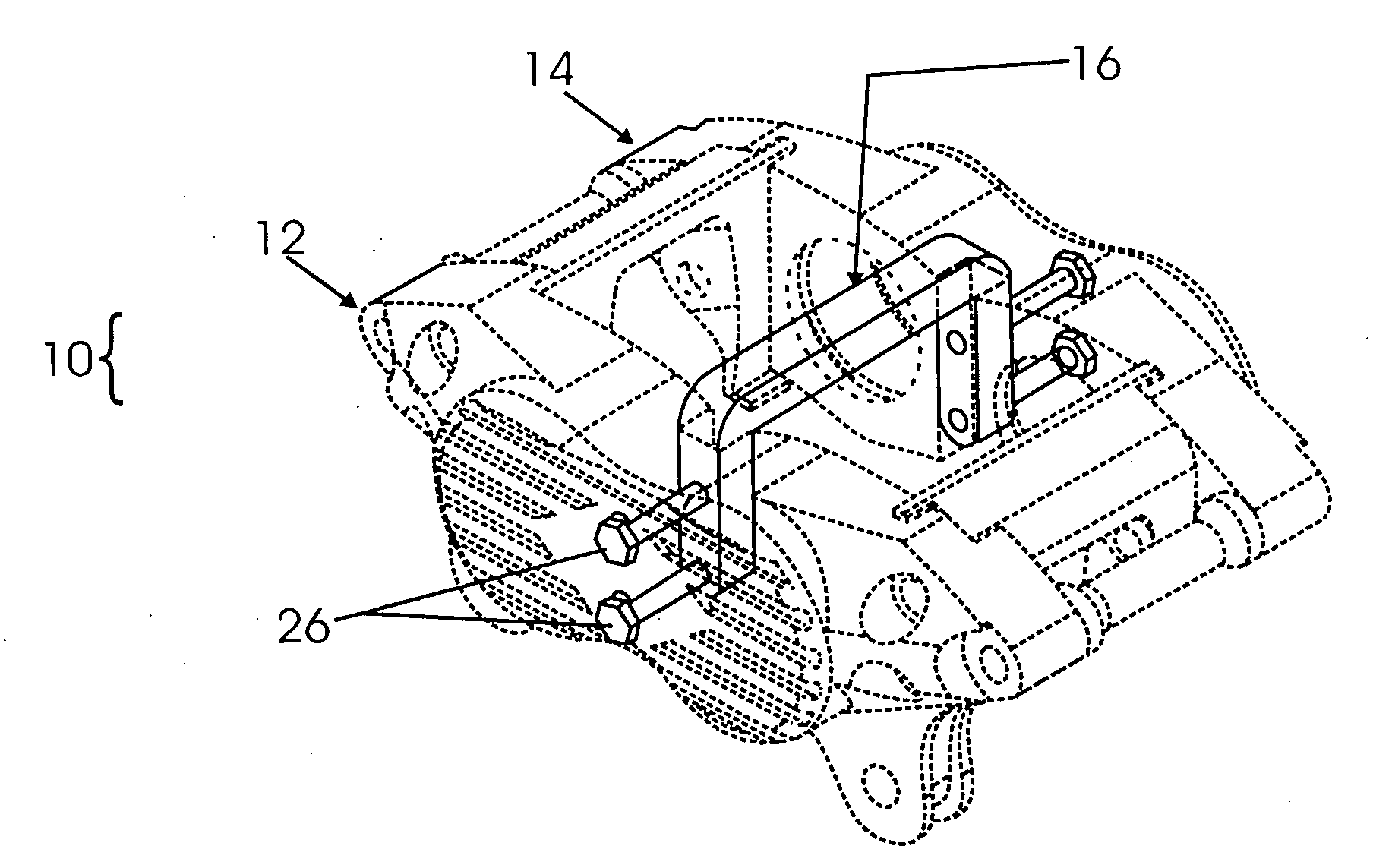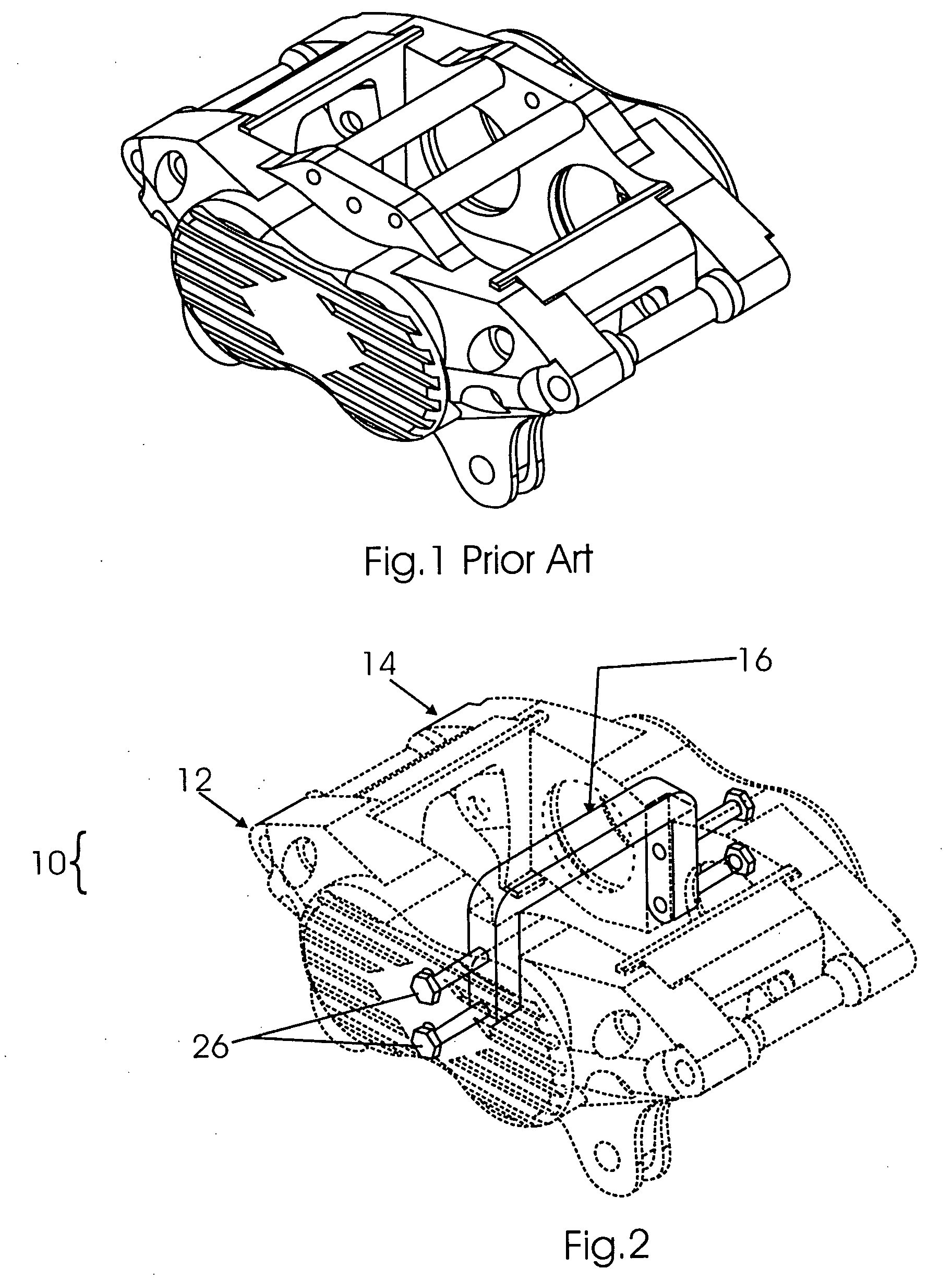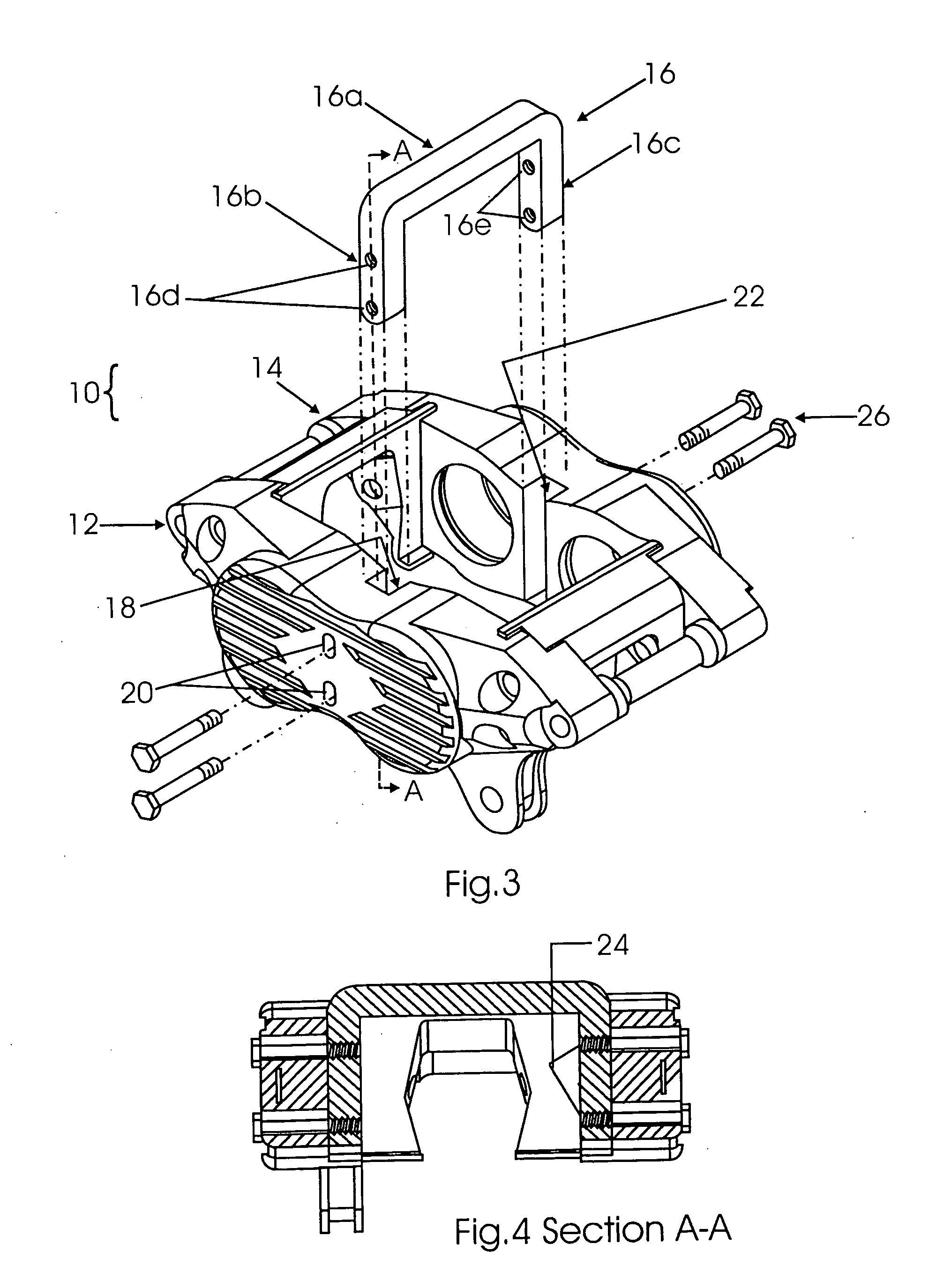Disk brake caliper having re-enforcing bridge
a brake caliper and disk brake technology, applied in the direction of brake types, mechanical devices, axially engaging brakes, etc., can solve the problems of low structural stiffness and low load capacity of low strength calipers, and achieve the effects of low strength, low load capacity and reduced weigh
- Summary
- Abstract
- Description
- Claims
- Application Information
AI Technical Summary
Benefits of technology
Problems solved by technology
Method used
Image
Examples
Embodiment Construction
[0021] A preferred embodiment of a brake caliper is shown in FIGS. 2 and 3. Referring to FIG. 2, the brake caliper 10 has first member 12 and second member 14 straddling the rotor (not shown), with first and second members 12, 14 connected by a bridge 16. FIG. 2 shows brake caliper 10 with bridge 16 connected to first and second members 12, 14. FIG. 3 shows a partially exploded view of brake caliper 10 with bridge 16 unconnected to first and second members 12, 14. It is to be noted that although FIGS. 2 and 3 show a C-section bridge 16, the bridge can take a variety of form and shape that incorporate the basic combination of cross member and associated anchors.
[0022] Referring to FIG. 3, C-section bridge 16 is generally comprised of a cross member 16a and associated anchor arms 16b and 16c. The C-section bridge 16 has at least one hole 16d in arm 16b and at least one hole 16e in arm 16c. The first member 12 has at least one channel 18 provided therein for receiving arm 16b of C-sec...
PUM
 Login to View More
Login to View More Abstract
Description
Claims
Application Information
 Login to View More
Login to View More - R&D
- Intellectual Property
- Life Sciences
- Materials
- Tech Scout
- Unparalleled Data Quality
- Higher Quality Content
- 60% Fewer Hallucinations
Browse by: Latest US Patents, China's latest patents, Technical Efficacy Thesaurus, Application Domain, Technology Topic, Popular Technical Reports.
© 2025 PatSnap. All rights reserved.Legal|Privacy policy|Modern Slavery Act Transparency Statement|Sitemap|About US| Contact US: help@patsnap.com



